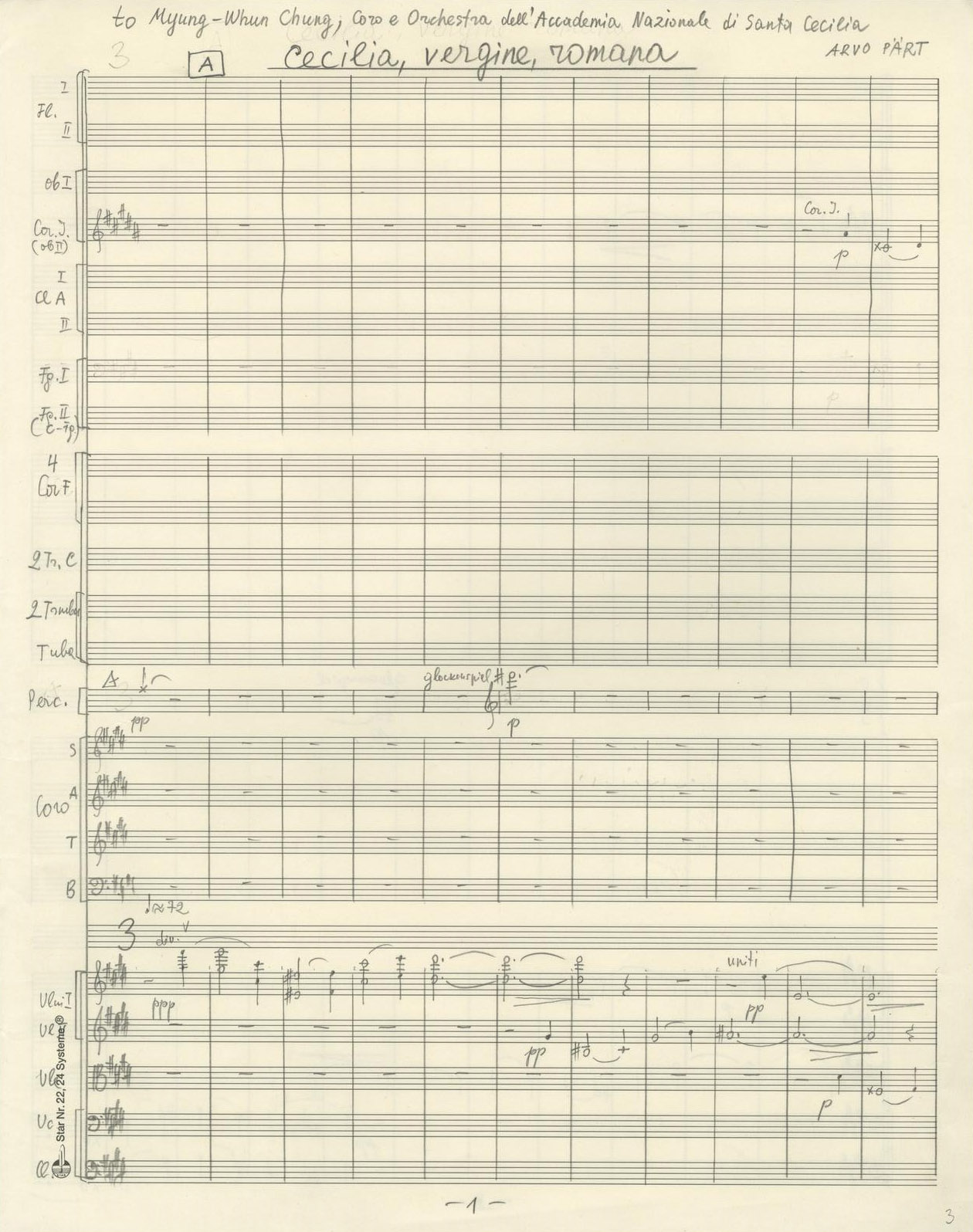Scored for
Duration
17–19 min
Short description
Cecilia, vergine romana was composed for the Chorus and Orchestra of Accademia Nazionale di Santa Cecilia on commission from Agenzia Romana, the body designated by the Pope to be responsible for the organisation of the events of the Holy Year 2000 in Rome. The composer was inspired by the martyrdom of Saint Cecilia, the text read in Catholic monasteries from the Roman Breviary (Liturgy of Hours) on 22 November, the feast day of the saint. Pärt received the old Italian translation of the text from the library of the Monastic Community of Bose in North Italy.
Saint Cecilia, who died as a martyr in ca 230 A.D., has been considered the patron saint of musicians since the 15th century. The composition is like a musical drama, expressively describing the events of Cecilia’s…

Estonian Philharmonic Chamber Choir, Estonian National Symphony Orchestra, Tõnu Kaljuste (conductor). CD In Principio. ECM New Series 2050
© ECM Records
World premiere
Concert: Accademia Nazionale di Santa Cecilia
Orchestra dell’Accademia Nazionale di Santa Cecilia , Myung-Whun Chung (conductor), Chorus of the Accademia Nazionale di Santa Cecilia , Filippo Maria Bressan (choirmaster)
Completion year
Revision year
Dedication
Commissioned by
Scored for
Duration
Publishers
Language
Instrumentation details
Vocal text
Cecilia, vergine romana, nata da nobile famiglia, fin dall’infanzia consacrò a Dio la sua verginità. Ma costretta a sposare Valeriano, lo persuase a lasciarla illibata e ad andare dal papa Urbano per essere fatto degno di ricevere il battesimo e così vedere l’angelo protettore di Cecilia. Quando Valeriano ottenne di vedere l’angelo, convertì a Cristo anche suo fratello Tiburzio, e tutti e due di lì a poco subirono il martirio sotto il prefetto Almachio. Cecilia poi fu presa dallo stesso Almachio per aver distribuito le loro ricchezze ai poveri, e fu condannata ad essere bruciata nella sala da bagno. Ma, non osando le fiamme toccarla, fu percossa tre volte con la scure e lasciata semiviva. Dopo tre giorni conseguì la palma della verginità e del martirio e fu sepolta nelle catacombe di Callisto. Il suo corpo e quello dei papi Urbano e Lucio, di Tiburzio, Valeriano e Massimo, furono poi dal papa Pasquale I tras…

